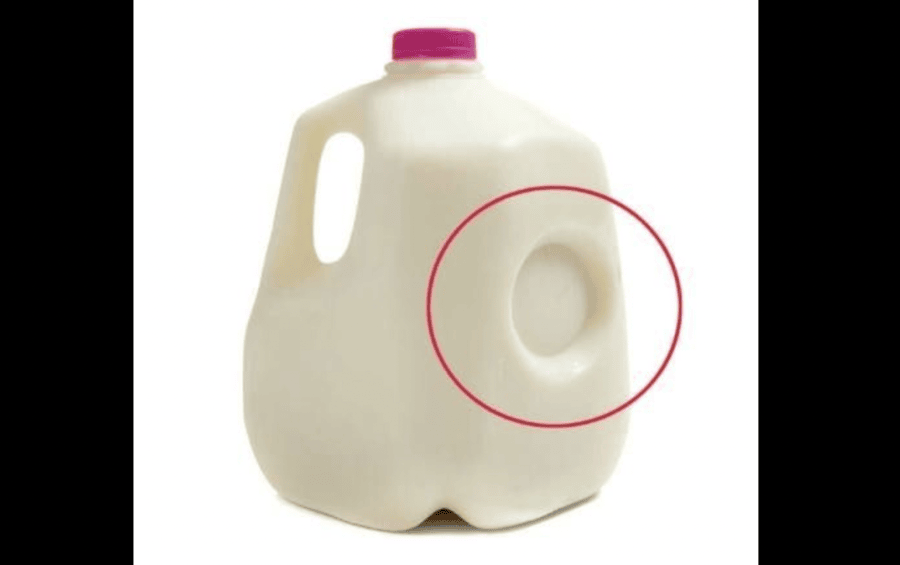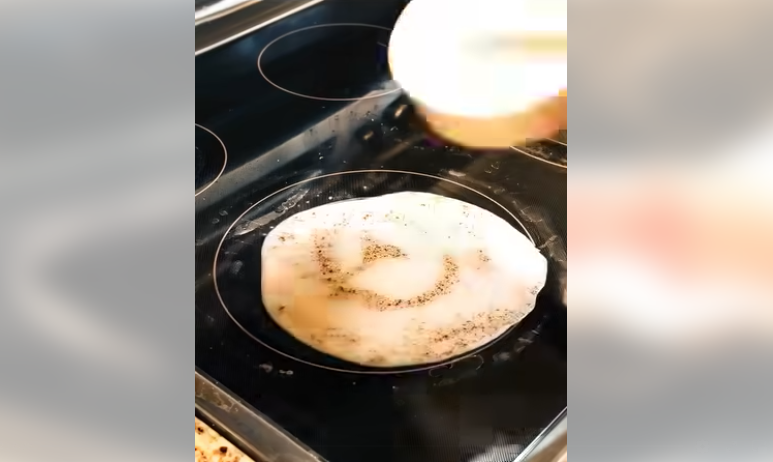Have you ever pulled a milk jug from the fridge and spotted a small, rounded indentation on its side? You’re not the only one to notice it — and you’re not alone if you’ve barely given it a thought.
At first, that dent might seem like a minor imperfection or an accidental mark. In reality, though, that subtle dip in the plastic is no flaw. It’s a deliberate piece of design that serves a vital purpose in how your milk jug functions — a tiny detail that quietly enhances convenience, safety, and sustainability.
Let’s explore why that dent exists and how such a small feature reflects thoughtful engineering for practicality, eco-friendliness, and clever design.
A Purposeful Feature, Not a Flaw
Surprisingly, the dent in your milk jug is there by design. It’s not the result of sloppy manufacturing or a random defect. Its role is to help the jug withstand pressure — quite literally.
Milk is dense, and plastic jugs are intentionally lightweight. When filled, the liquid’s weight and pressure can cause the jug to swell, distort, or even crack over time. Add in temperature changes — like moving from a cold fridge to a warm pantry — and the plastic faces even greater stress.
That’s where the dent steps in. It serves as a “flex zone,” a built-in feature that lets the jug slightly expand or contract without breaking or deforming.
So, when you place a jug on the counter and hear a soft pop or notice it subtly shift, that dent is at work — managing pressure and preventing a spill.
A Shock-Absorbing Ally — Saving Your Floors
Have you ever accidentally dropped a milk jug? It happens to everyone. If you’ve been fortunate enough to avoid a kitchen floor covered in milk, you can thank that dent.
The indented area helps absorb some of the impact when the jug hits the ground. It acts like a cushion, flexing just enough to soften the blow and reduce the chance of the plastic splitting open.
In essence, it’s like a protective buffer for your milk.
Reducing Plastic, Boosting Sustainability
There’s another clever reason for that dent: it enables manufacturers to use less plastic while keeping the jug strong and reliable.
How? Picture an arch in a building. By shaping the plastic strategically, engineers reinforce the jug’s structure without needing thicker walls. This saves materials, cuts costs, and reduces energy use — making the jug more environmentally friendly.
Many companies are focused on shrinking the environmental impact of their packaging, and this small design choice contributes. Sustainable packaging isn’t always about flashy changes like plant-based materials — sometimes, it’s about understated innovations like this dent.
Streamlining Recycling — A Win for Efficiency
When the milk is finished and the jug is rinsed, it’s ready for the recycling bin — and the dent helps here too.
Acting as a natural weak point, it makes the jug easier to crush, saving space in your bin and simplifying the recycling process. Compacted jugs take up less room, which means more efficient transport and processing at recycling facilities, cutting down on energy use and emissions.
So, when you squash a jug before recycling, you’re making the system run smoother — with a little help from that dent.
A Touch of Branding with Practicality
Some milk brands use the dent as a canvas, adding a logo, measurement mark, or decorative element to the indented area.
Even without branding, though, the dent remains a functional hero, keeping your jug sturdy, safe, and sustainable.
It’s a subtle nod to the fact that even the most everyday items — the ones we grab from the fridge without thinking — are often crafted with intention and care.
Why This Small Detail Matters
As we grow older, we often come to value the small conveniences that make daily life smoother. We’ve witnessed milk packaging evolve from heavy glass bottles to lightweight plastic jugs, with modern designs prioritizing efficiency and functionality.
Yet, these designs are far from ordinary. The quiet brilliance of a milk jug dent tells a story of ingenuity:
- It prevents spills and reduces waste.
- It minimizes plastic use.
- It supports recycling efforts.
- It quietly protects your kitchen from messy accidents.
All of this happens without drawing attention to itself.
Small Features, Big Impact
Whether you’re 17 or 70, there’s something reassuring about knowing that even the simplest household items — like a milk jug — are designed with purpose. The next time you pour a glass of milk or grab a jug from the fridge, pause to notice that small dent. It’s more than just a part of the packaging.
It’s proof that thoughtful design can make a difference in quiet, meaningful ways — safeguarding your groceries, conserving resources, and making life a bit easier.
For those who’ve seen decades of household products come and go, it’s a reminder to appreciate the subtle brilliance woven into the everyday objects we often overlook.




